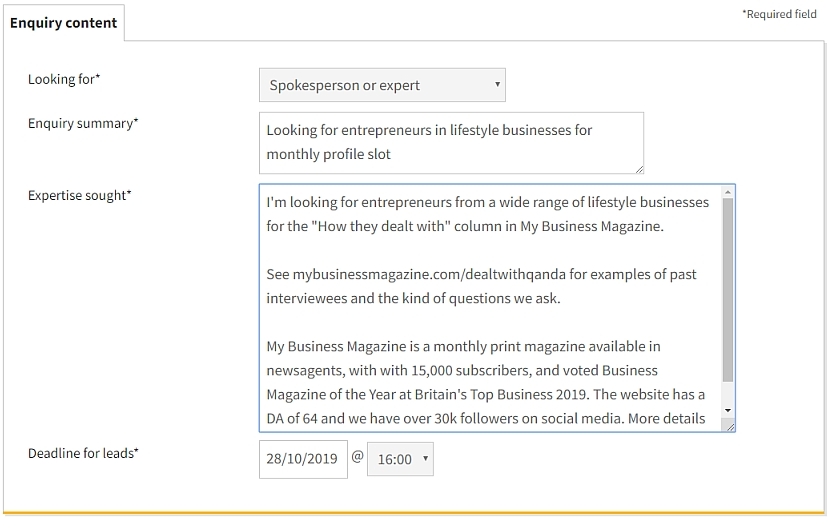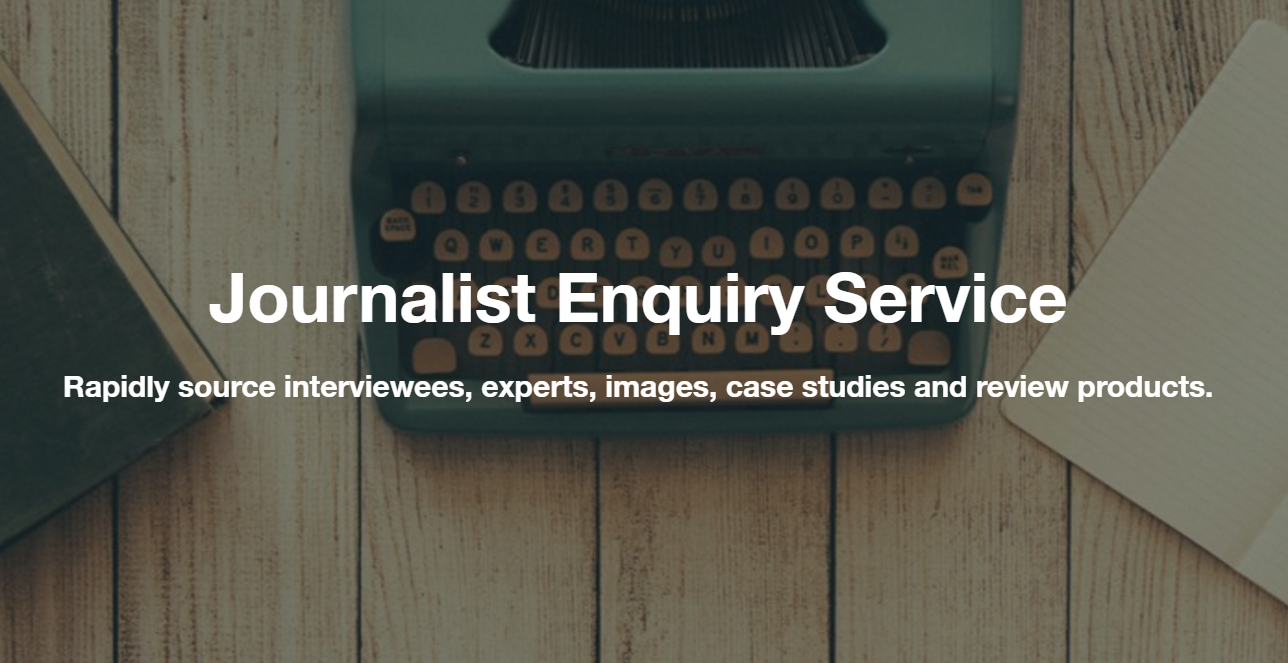Blog / How to... / Journalists
How to improve your requests on the Journalist Enquiry Service

Most journalists who send media requests on ResponseSource get the answers they’re looking for first time, but sometimes they want to hear from more contacts. We’ll often suggest they reword and resend the request using these three tips to get more responses.
Don’t tell, show – especially for profiles, interviews, product pages and gift guides
If you’re responsible for any regular feature like Q&As, product pages or shopping guides, then including a link to a past version has several advantages. Not only does your brilliant content get more hits but seeing it in black and white can make it easier for a PR or brand to understand what kind of information you’ll need. They can also share the link with colleagues or clients – making it easier for them to evaluate and more likely that you’ll get replies from the right people.
At this time of year, we’re getting quite a few requests for Christmas gift guides from national press and even the occasional trade title, to lifestyle magazines and blogs. These requests tend to get lots of replies from the brands and PR agencies who subscribe to ResponseSource – but you’ve got a lot of space to fill. You probably want plenty of choice so that your finished piece is surprising but focused on your reader; providing a link can really help with this.
Put yourself in your recipient’s shoes – what do they want to know?
If you’re in a rush, a one sentence request is better than nothing, and often it’ll be all you need. Expert requests like ‘Looking for lawyer comments – 100 words for a story titled …’ or ‘a GP or health expert to talk about minor ailments’ don’t really need a lot more detail (and they get results – these are real examples).
However, if you can include more detail, it can make it easier for a recipient to understand what you want. Think what questions they might ask – or if you’ve sent the request before and find yourself answering the same questions, include the answers in your enquiry. ’I need quotes from a CEO rather than middle managers’ or ’New spirits and liqueurs for Christmas drinks: needs to be released in the last 12 months, no older, and widely available in UK supermarkets’ could save time by cutting down on irrelevant replies but it can also catch the eye of someone who has exactly the person or product you’re looking for.
If you’re looking for an interviewee you could mention a couple of the questions or topics you have in mind; if you need someone to be available in person or at a particular time, say so. If you’re reviewing products, mention any restrictions around price range, availability or style. Just take a moment to think about what questions you might get back and answer them briefly in advance.

Sell, sell, sell
Journalists are pressed for time – but so are PR professionals and businesses. Don’t be afraid to show off about your readers, your circulation, the quality of your content or yourself. In the ’Media outlet description’ section we provide some basic detail about your outlet and readers but you can add anything you like – ABC1 breakdowns, circulation figures, descriptors, awards and prizes, quotes and straplines can all help a PR understand both who you’re writing for and what your audience cares about, and also why it would be good for them or their client to help you out. If you’re an award-winning journalist, include that (and let us know so that we can make sure your profile in our Media Database is as up to date as possible).
This is also where including a link can help again – seeing how much space a profile or product page takes up and how impressive it looks in black and white can make all the difference.
Why not put these tips to work on a request now? Go to https://responsesource.com/send to get started. If you’re not sure how to word a request, or if you send one that doesn’t quite work out, we’re here to help – just email hello@responsesource.com
